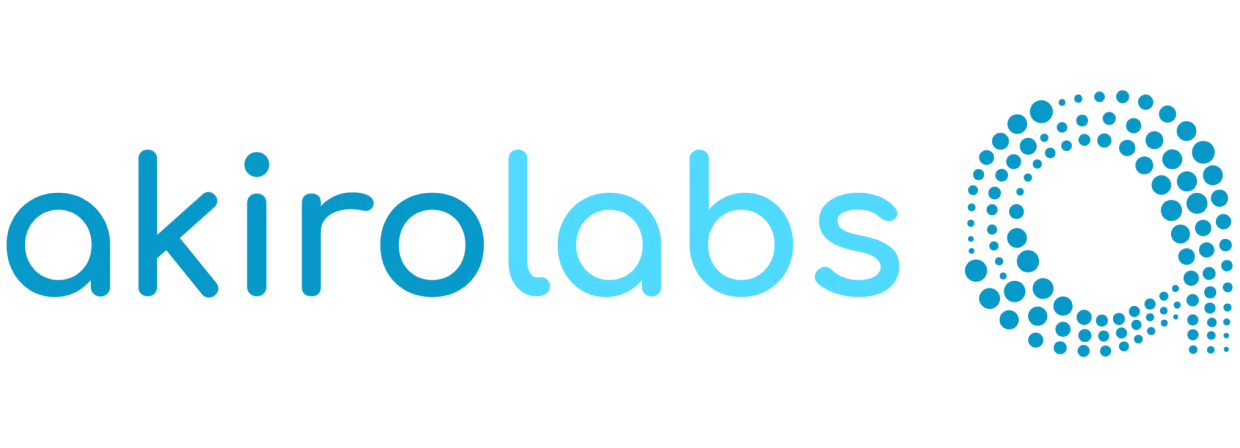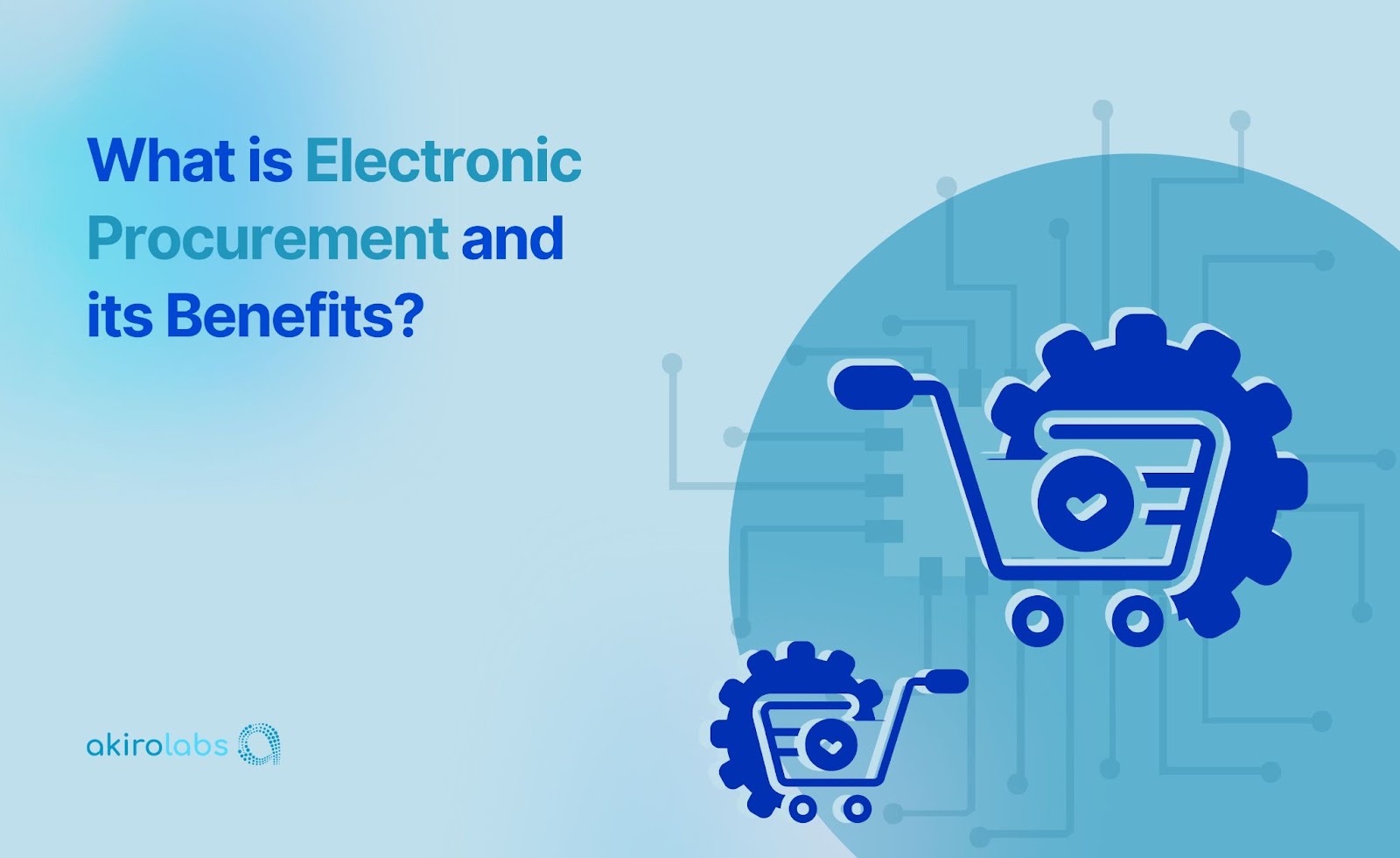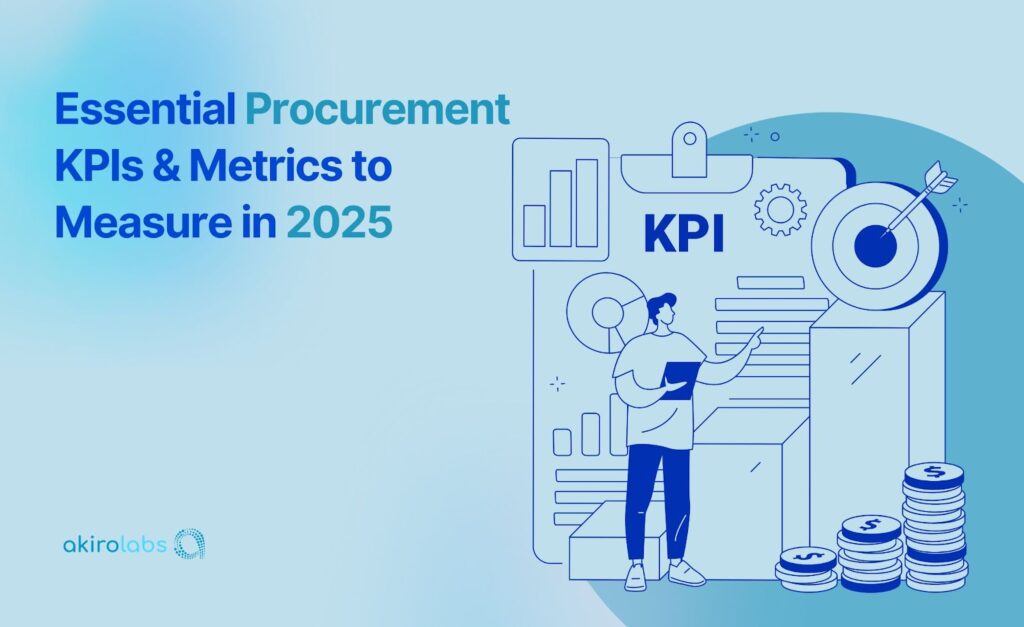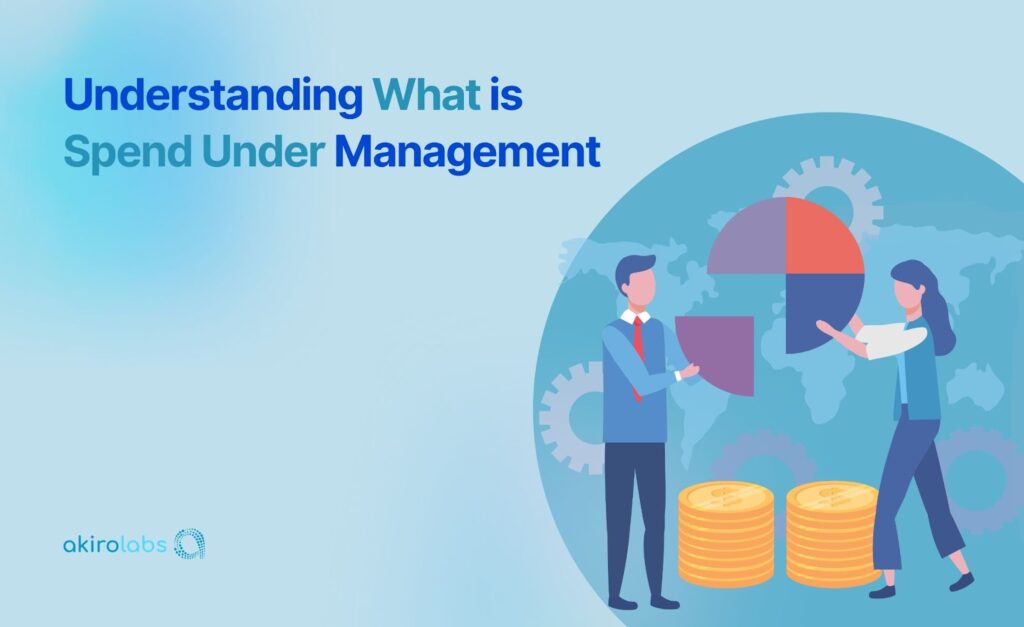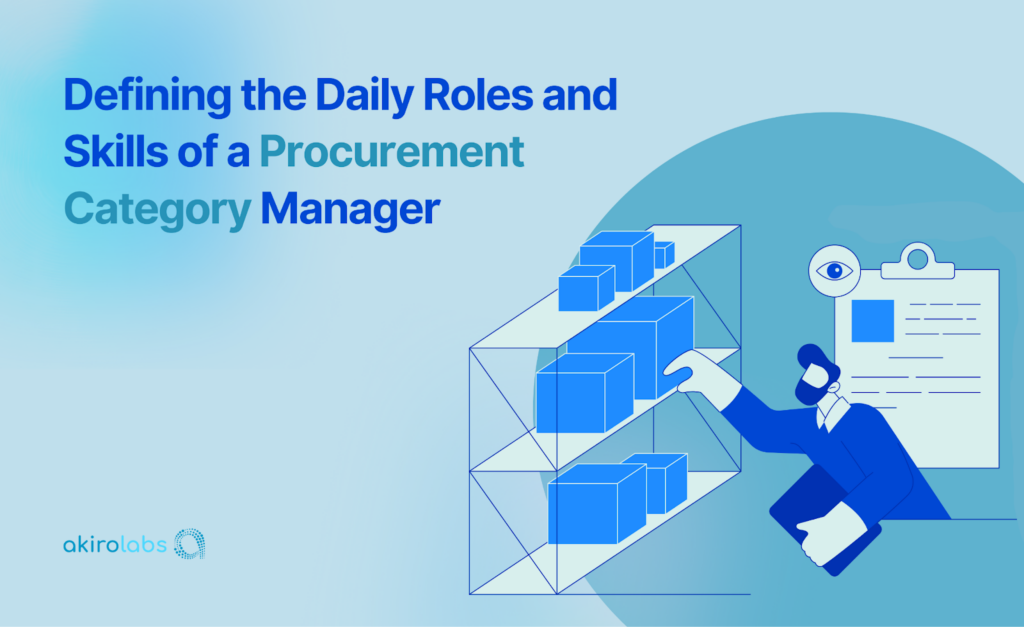What is Electronic Procurement and What are its Benefits?
In procurement, you’re doing it all—balancing costs, ensuring quality, keeping suppliers on schedule, and aligning with organizational goals. It’s a demanding role. Fragmented systems and manual workflows add another layer of complexity. They slow progress and reduce efficiency.
This is where electronic procurement makes a difference. Routine tasks can be automated. Real-time insights become readily available. Most importantly, you’ll have the time and resources to focus on strategy and deliver better results.
Of course, you’re not alone if you’ve faced challenges with e-procurement. A study found that many procurement leaders view the cost of software as a significant hurdle. Tools that are overly complex or don’t fit your needs can create even more problems. But here’s the good news: these issues can be solved with the right system.
In this blog, you’ll discover how electronic procurement works, the benefits it offers, and how it can help you overcome common pain points. Ready to take your procurement strategy to the next level? Let’s begin.
What is Electronic Procurement?
Electronic procurement, or e-procurement, digitizes your purchasing workflows, letting you handle everything from requisitions to payments on digital platforms. It replaces paper-based processes with automation, reducing errors and improving efficiency.
Key Features of E-Procurement
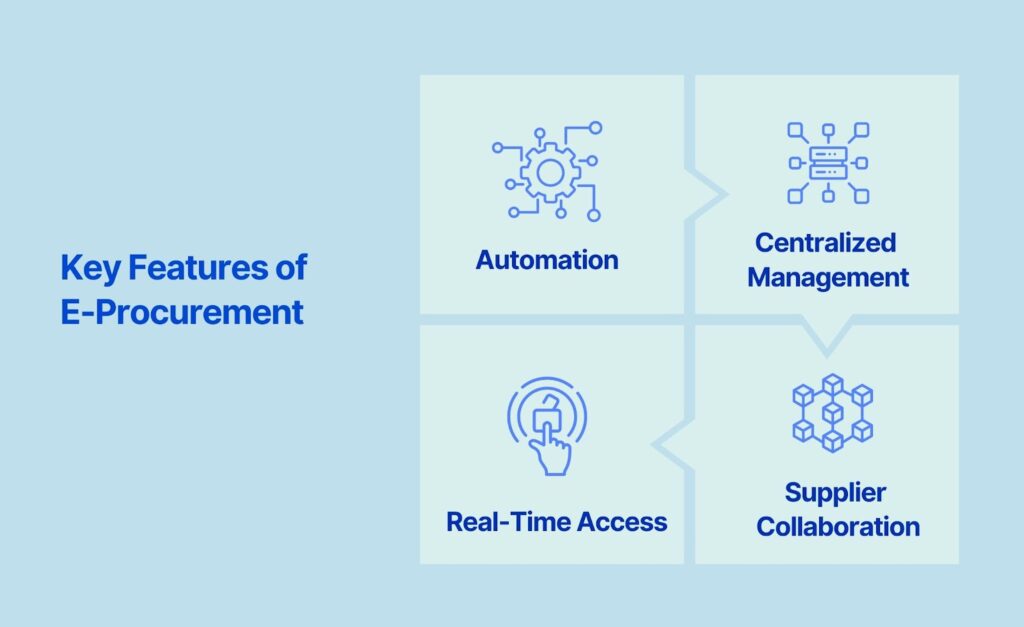
- Automation: Streamline tasks like order creation, approvals, and invoicing to save time and reduce errors.
- Centralized Management: Keep all procurement activities in one place for better tracking and compliance.
- Real-Time Access: Get up-to-date insights on orders, inventory, and suppliers to make quick decisions.
- Supplier Collaboration: Simplify communication and contract management with your suppliers.
Why e-Procurement Matters
E-procurement is growing rapidly in the U.S., helping businesses like yours improve efficiency and cut costs. You can shorten procurement cycles, reduce operational expenses, and gain clearer insights into spending. Plus, it gives you the agility to adapt to market shifts and supply chain disruptions.
With e-procurement, you’re not just improving processes but staying competitive. Now that you understand what electronic procurement is and why it matters, let’s take a closer look at how it works, from the first requisition to the final payment.
The Mechanism of Electronic Procurement
Electronic procurement simplifies how you manage purchasing, from the initial request to making the final payment. Here’s how the process works:
Requisition to Payment Workflow
The requisition to payment workflow streamlines the procurement process, ensuring seamless coordination from initial request to final payment with minimal manual effort.
- Purchase Requisition Initiation: It all starts when someone in your organization identifies a need for goods or services. They submit a purchase requisition, which explains what’s needed, why, and the details like quantity and specifications. This request goes to the procurement team or the relevant department for review.
- Automated Approval Workflows: Once the requisition is submitted, the approval process kicks in automatically. Predefined rules, like budget limits or departmental authority, ensure the right people review the request. This cuts down delays and avoids errors that often happen with manual approvals.
- Digital Purchase Orders: After approval, a purchase order (PO) is generated digitally and sent directly to the supplier. This PO includes everything your supplier needs to know—quantities, prices, and delivery terms. By using digital documents, you can save time and reduce paperwork.
Integration of Systems
For e-procurement to work seamlessly, it needs to connect with other systems your organization uses.
- Procurement and Inventory: By linking e-procurement to your inventory system, you get real-time updates on stock levels. This means you can make smarter purchasing decisions, avoiding overstocking or running out of essential supplies.
- Procurement and Finance: Connecting e-procurement to your finance system automates how you handle invoices and payments. Invoices are automatically matched to purchase orders and receipts, reducing errors and speeding up approvals.
With the workflow and system integration in place, let’s break down the core components that make electronic procurement systems so effective.
Core Components of E-Procurement Systems
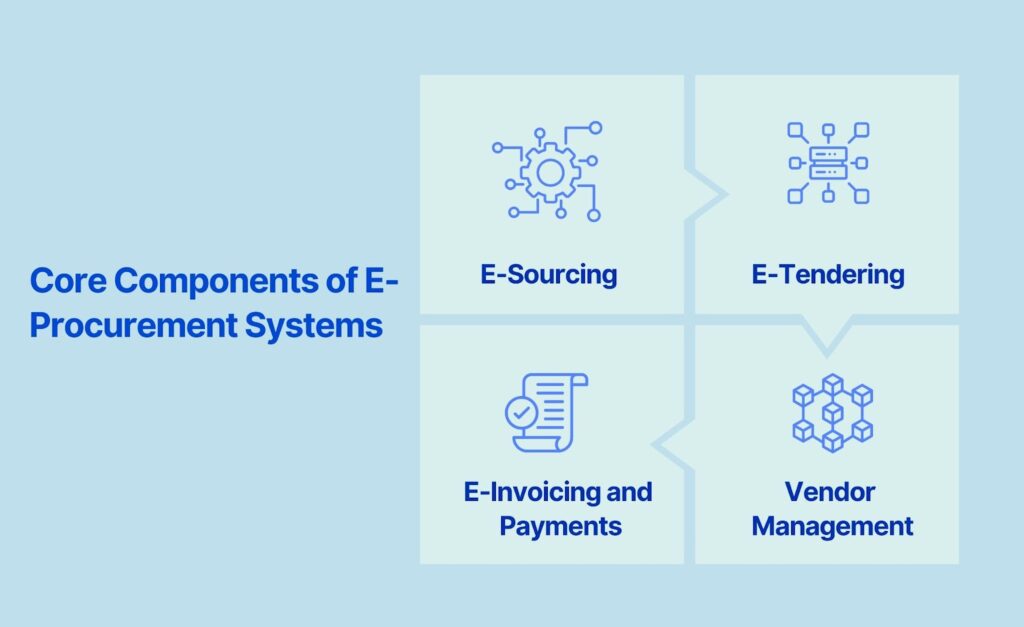
Electronic procurement systems simplify and enhance your procurement process by breaking it down into key components.
1. E-Sourcing
E-sourcing helps you identify and pre-qualify suppliers quickly and efficiently.
- Find the Right Suppliers: Use online databases to search for vendors that meet your criteria without wasting time on manual research.
- Pre-Qualify Vendors: Review supplier documentation and performance metrics to ensure you’re choosing capable and reliable partners. This upfront vetting helps you avoid issues later in the process.
2. E-Tendering
E-tendering makes managing RFPs and vendor bids easier.
- Create and Share RFPs: You can generate and send RFPs electronically, ensuring suppliers receive clear and standardized requirements.
- Evaluate Bids Transparently: Automate the bid evaluation process with tools that compare proposals based on predefined scoring criteria. This reduces bias and speeds up decision-making.
3. E-Invoicing and Payments
This component automates financial transactions, making your payment process smoother.
- Handle Invoices Digitally: Submit, review, and approve invoices electronically to eliminate errors and delays caused by manual handling.
- Pay Suppliers Faster: With integrated payment systems, you can process payments quickly, improve cash flow, and build stronger relationships with your suppliers by paying on time.
4. Vendor Management
Vendor management tools help you monitor and improve supplier performance over time.
- Track Performance: Use metrics like delivery times, product quality, and compliance to evaluate how well your suppliers meet your expectations.
- Drive Continuous Improvement: Communicate with suppliers to resolve issues and collaborate on long-term improvements. This builds trust and fosters stronger partnerships.
Building on these core components, advanced tools further enhance e-procurement by integrating intelligence, scalability, and efficiency into your processes.
Building on the foundation of core components, electronic procurement systems are further enhanced by advanced tools that integrate intelligence, connectivity, and scalability into your workflows.
Advanced Tools Powering E-Procurement
Electronic procurement systems use advanced tools to make your processes faster, smarter, and more efficient. Here are the key technologies driving e-procurement today:
1. ERP and EDI Systems
These tools help you connect procurement with other parts of your organization:
- ERP Systems: By integrating with ERP platforms like SAP or Oracle, you can synchronize data across procurement, inventory, and finance. This keeps everyone on the same page with accurate, up-to-date information.
- EDI Systems: With EDI, you can electronically exchange documents like purchase orders and invoices with suppliers. This eliminates manual entry, reduces errors, and speeds up transactions, cutting down your procurement cycle time.
2. Cloud-Based Procurement Platforms
Cloud-based solutions give you flexibility and scalability:
- Real-Time Access: With a cloud-based system, you can access procurement data anytime, anywhere. This is ideal if your team works remotely or across different locations. You can respond to procurement needs quickly and collaborate more effectively.
- Scalability: These platforms grow with your business. Whether your transaction volumes increase or your needs change, a cloud-based system adapts without requiring expensive upgrades or new infrastructure.
3. AI and Analytics
These tools bring intelligence to your procurement strategy:
- AI: Artificial intelligence automates tasks like invoice processing and supplier evaluations. It analyzes past data to predict future needs, recommend suppliers, and help you negotiate better terms.
- Analytics: Advanced analytics show you detailed insights into spending patterns, supplier performance, and market trends. You can use these insights to spot cost-saving opportunities and improve supplier relationships.
Why These Tools Matter
With these advanced tools, you can streamline processes, make faster decisions, and manage your procurement strategy more effectively. They help you reduce errors, improve collaboration, and save costs while giving you the insights you need to stay ahead in a competitive market.
Also Read: Understanding the Importance and Basics of Strategic Sourcing
Addressing Procurement Challenges
While electronic procurement simplifies and streamlines operations, it also comes with challenges that require a strategic approach. Here are the key obstacles you might face and how e-procurement can help overcome them.
Challenge | Details | Solution |
Manual Processes Slowing You Down | Traditional methods involve manual tasks, lengthy approval processes, and paperwork, causing delays, errors, and inefficiencies. | Automate repetitive tasks like order approvals and invoice processing with e-procurement systems to reduce errors, speed up workflows, and enhance overall efficiency. |
Limited Visibility into Procurement Data | Traditional systems fail to provide actionable insights and struggle with integration, leading to fragmented data and poor decision-making. | Use e-procurement platforms with real-time analytics and centralized data. Integration with finance and inventory systems ensures seamless access to accurate information for better strategic planning. |
Managing Supplier Risks | Ensuring supplier compliance with regulations and contracts can be challenging in complex ecosystems without robust tracking mechanisms. | Track supplier performance using e-procurement tools. Monitor delivery timelines, product quality, and compliance to build stronger relationships and proactively address issues. |
Scaling Procurement Operations | Organizational growth increases complexity, transaction volumes, and supplier base, which can overwhelm limited resources and budgets. | Cloud-based e-procurement systems scale with your organization, adapting to growing demands without significant infrastructure investments. Automation also helps manage increased workloads efficiently. |
Having addressed the challenges of e-procurement, let’s explore how akirolabs offers innovative solutions to overcome these obstacles and transform your procurement strategy into a driver of strategic value and efficiency.
How akirolabs Empowers Your Procurement Team with E-Procurement
At akirolabs, our goal is to transform procurement into a strategic value driver by combining advanced AI capabilities with modern procurement practices. Our platform enhances electronic procurement (e-procurement) by improving decision-making, aligning workflows, and fostering collaboration across teams.
AI-Enhanced Strategic Procurement
akirolabs bridges the gap between tactical e-procurement and strategic innovation. Our tools support category management, enabling procurement teams to focus on sustainability, resilience, and innovation alongside cost savings. Strategic scenario modeling helps visualize options, weigh trade-offs, and align decisions with business priorities. With AI-powered insights, teams can make informed choices using market data, supplier performance metrics, and historical trends.
Collaboration Across Teams
Cross-functional collaboration is at the heart of akirolabs. The platform provides a centralized workspace where procurement, finance, and operations teams can work together seamlessly. Integrated communication tools ensure transparency and alignment, reducing the risk of missteps or inefficiencies.
Key Features for Procurement Excellence
akirolabs enhances strategic procurement with spend analysis integration, stakeholder engagement tools, and executive dashboards for tracking KPIs. While not focused on operational tasks like e-invoicing, the platform complements these systems by enabling strategic improvements that drive long-term value.
Addressing Procurement Challenges
akirolabs tackles fragmented processes by consolidating strategy creation, execution, and tracking in one place. It supports supplier evaluations based on ESG compliance and innovation while providing real-time insights to navigate dynamic market conditions.
Sustainability at the Core
akirolabs integrates sustainability into procurement strategies, helping teams align purchasing decisions with ESG goals. This ensures procurement contributes to corporate responsibility while maintaining efficiency.
With akirolabs, procurement evolves from a back-office function into a key enabler of business success.
Conclusion
Electronic procurement is no longer just a way to streamline operations; it’s a strategic enabler transforming how businesses manage sourcing, supplier relationships, and cost efficiency. E-procurement empowers organizations to overcome challenges and focus on delivering long-term value by automating workflows, integrating data, and providing real-time insights.
At akirolabs, we go beyond traditional procurement tools to offer AI-powered market intelligence, collaborative workflows, and real-time dashboards that elevate your procurement strategy. Whether you’re looking to optimize category management, improve supplier performance, or align with ESG goals, our platform is designed to help you achieve measurable results.
Don’t let outdated processes hold your organization back. Modernize your procurement strategy with akirolabs and unlock your team’s full potential.
